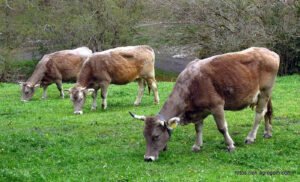Agriculture Education in Cambodia: An Overview and Prospective Paths. Agriculture remains the heart of Cambodia’s economy, employing approximately 70% of the population as of my knowledge cut-off in 2021. The sector has enormous potential for driving socio-economic development. However, the country’s agriculture sector has been marked by limited productivity growth due to factors such as reliance on rain-fed systems, low agricultural mechanization, and low adoption of improved crop varieties and farming practices. Addressing these challenges demands a keen focus on enhancing the level and quality of agricultural education. This article explores the state of agricultural education in Cambodia, its implications, challenges, and potential future paths.
Agricultural Education in Cambodia: The Current Scenario
In Cambodia, agricultural education is embedded within the broader education system. The Ministry of Education, Youth, and Sports (MoEYS) and the Ministry of Agriculture, Forestry, and Fisheries (MAFF) oversee the administration of agricultural education.
Agricultural education can be found at various levels of the Cambodian education system. In the general education curriculum, agriculture is included as a subject at the lower secondary level, with the aim to expose young learners to basic knowledge of farming practices and principles. In addition, several vocational training schools and higher education institutions offer specialized agriculture courses and degrees. The Royal University of Agriculture (RUA), for instance, is a leading institution offering a range of undergraduate and graduate programs in agriculture and related fields.

Despite these provisions, the agricultural education landscape in Cambodia presents significant challenges. Foremost among these is the overall quality of education. As in many developing countries, the education system in Cambodia suffers from issues such as inadequate infrastructure, poorly trained teachers, outdated curriculum, and insufficient teaching materials. These shortcomings are particularly pronounced in rural areas where the majority of farming households are located.
In the sphere of higher education, agricultural courses often lack practical, hands-on training. This is due to limited resources, lack of modern laboratories, and farms for practical sessions. Consequently, graduates may lack the skills necessary for modern farming, such as managing high-tech irrigation systems, applying precision farming techniques, or utilizing digital agriculture tools.
Furthermore, agricultural education is often seen as less prestigious and less attractive compared to other fields. This perception, combined with limited awareness about the opportunities in the agriculture sector, results in fewer young people choosing agriculture-related courses and careers.
Implications
The state of agricultural education in Cambodia has significant implications for the country’s development. Without access to quality agricultural education, farmers are less likely to adopt innovative farming practices, which can limit productivity and hinder the development of the agriculture sector.
Moreover, the youth’s disinterest in agriculture threatens the sustainability of farming in Cambodia. With the aging population of farmers, there’s an urgent need to attract younger generations to the sector. Failure to do so could result in labor shortages and further stagnation of agricultural productivity.

The Future of Agricultural Education in Cambodia: Potential Paths
Addressing the challenges of agricultural education in Cambodia requires a multi-pronged approach. It involves improving the quality of education, making agricultural education more attractive to the youth, and creating strong linkages between education and industry.
Improving the Quality of Education: Investments in education infrastructure, teacher training, curriculum development, and teaching materials are crucial. For higher education institutions, collaborations with international universities could be beneficial in modernizing the curriculum, training teachers, and setting up modern labs and farms. Furthermore, integrating digital technologies into agricultural education can help improve the quality and reach of teaching.
Making Agriculture Attractive: To attract more young people to agriculture, there’s a need to change the perception of the sector as being merely about manual labor. This involves showcasing the wide range of career opportunities in the sector, from agribusiness and agritech to research and development. Additionally, introducing agriculture in schools at an early age can help students develop an interest and understanding of the sector.
Creating Strong Linkages: Strong linkages between education and industry can help ensure that agricultural education is relevant and responsive to industry needs. These can be facilitated through mechanisms such as industry advisory committees, internships, and job placements. Moreover, partnerships with agribusinesses can provide students with hands-on training opportunities and exposure to the real-world applications of their learning.

Conclusion
Agricultural education in Cambodia is critical for driving the country’s agricultural development and overall socio-economic progress. While significant challenges exist, there are also opportunities to transform agricultural education through targeted investments, partnerships, and innovative approaches. By doing so, Cambodia can build a new generation of skilled farmers and agricultural professionals, ready to take the country’s agriculture sector into a future marked by innovation, sustainability, and increased productivity.
See more:
